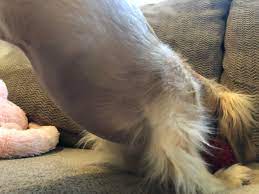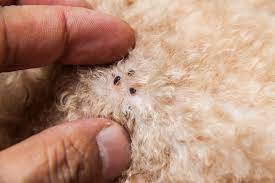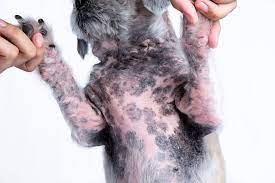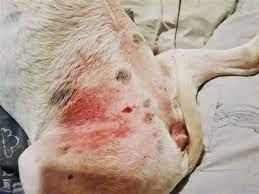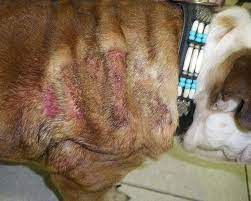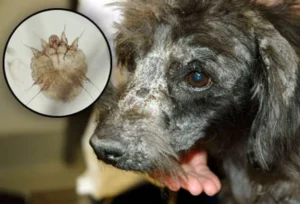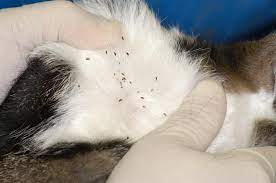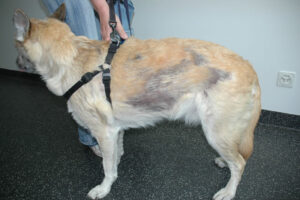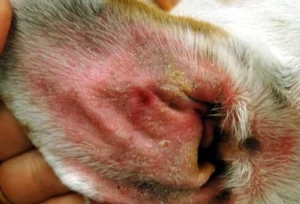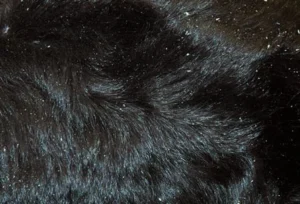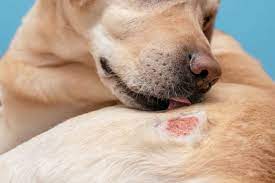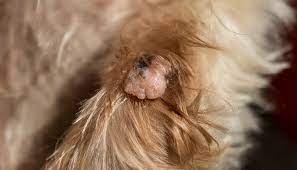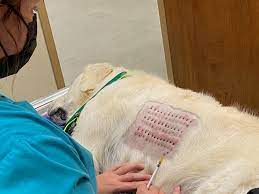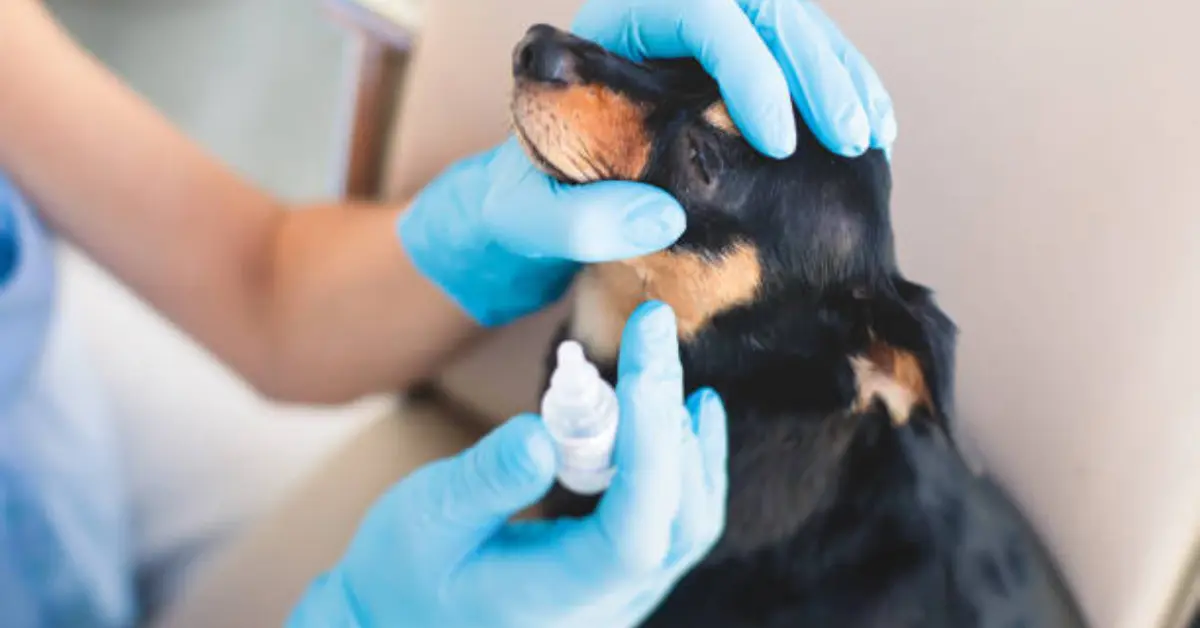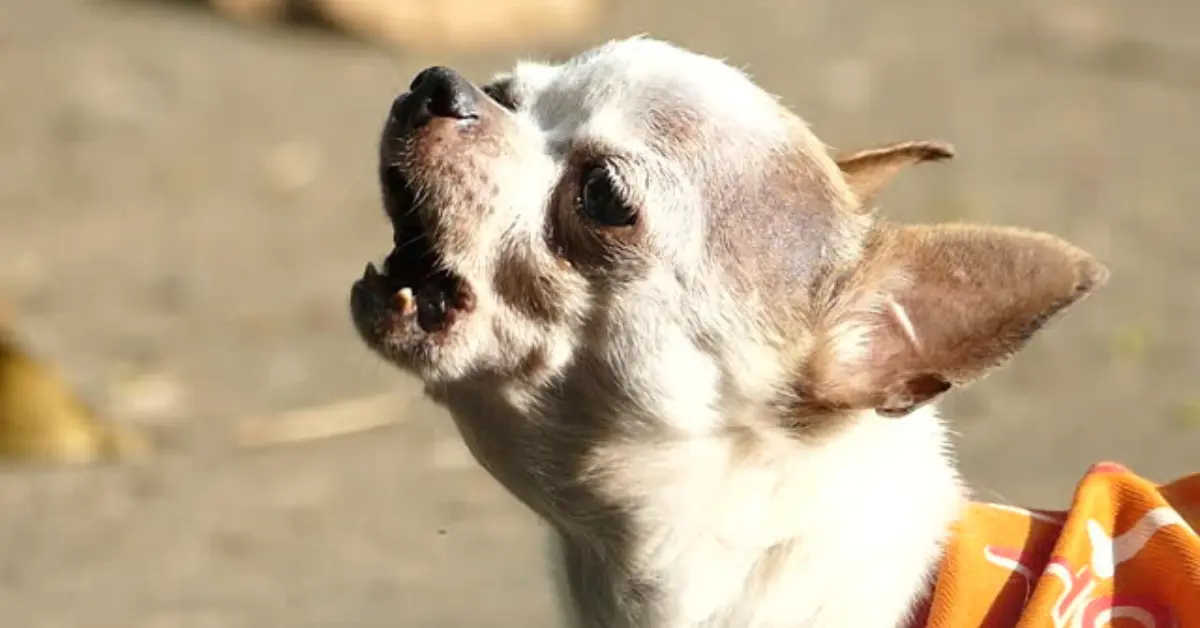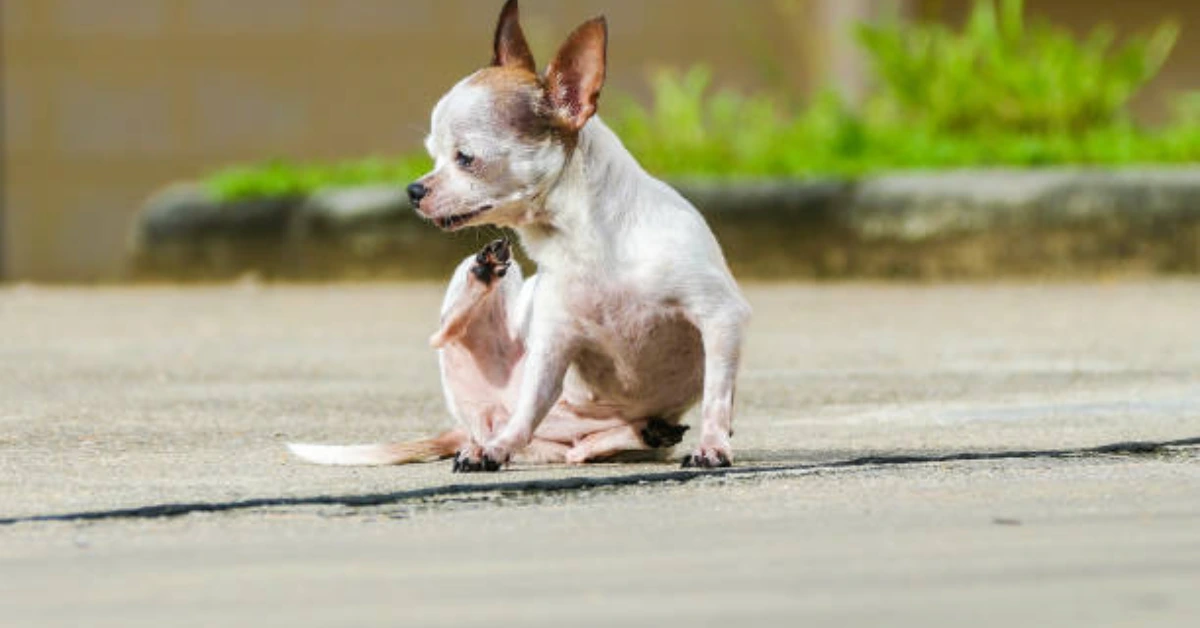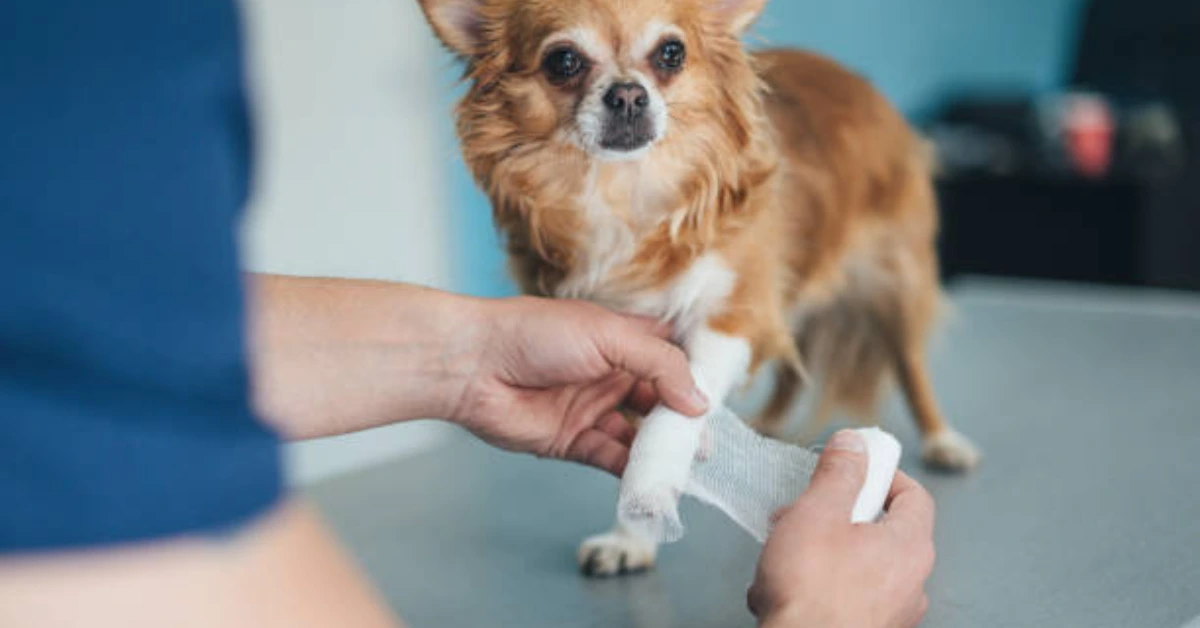Have you got a Chihuahua dog? If so, you might already be aware of the several skin issues in chihuahuas.
Due to their high level of sensitivity to changes in the weather and grooming habits, Chihuahuas can develop unpleasant and annoying skin disorders such as fungal infections or hot spots. We’ll look closely at the causes of these kinds of skin issues in Chihuahuas in this article, along with some practical treatments.
So continue reading to get all the information you require if your Chihuahua is exhibiting any symptoms of discomfort, possibly as a result of an illness affecting their priceless fur!
Tbale of Contents
Symptoms Of A Crusty Chihuahua
You may not know this, but dogs can get 160 different skin problems. On the other hand, there are five problems that Chihuahuas have that happen most often.
If you see your Chihuahua scratching or a spot where its fur is getting thinner, you might want to look into it more. Don’t guess if your Chihuahua is having trouble; learn to spot the most common problems they have.
The skin of your chihuahua is flaky
Your Chihuahua’s skin can get very dry at times, leaving flaking that looks like dandruff.
When it’s time to groom your Chihuahua, you might not notice this until you see the tiny bits of dead skin that have settled in its hair.
The skin of your chihuahua is Itchy
A Chihuahua will often scratch itself when it’s itchy, but that’s not the only thing they can do. They will sometimes rub against things or bite the area that hurts.
Because skin problems, like infections, can make your Chihuahua itch, watch how it acts if you think there might be a problem.
Some Chihuahuas may chew on a certain area over and over again, which can cause them to lose fur and get bald spots from the intense itching. Chihuahuas that have skin problems around their ears may also shake their heads a lot to try to feel better.
Your Chihuahua’s fur is getting thinner
Hair loss or thinning fur that doesn’t show any signs of itching, flaking, or discomfort could be a sign of a skin problem.
Skin health is important for a full coat, so if your Chihuahua’s skin is shrinking or there are bald spots, you should take care of them.
There are scabs on your Chihuahua’s skin
Chihuahuas often get scabs when they scratch an itchy spot and make a hole that heals with a scab. But scab-like sores can also show up on a Chihuahua’s skin because of other skin problems, which we’ll talk about more below.
The skin of your Chihuahua is darkened
In addition to the usual reddish-pink hue of inflamed areas, several skin conditions and infections can result in darkening or even blackening of the skin.
Rashes on your Chihuahua
Rashes are a common manifestation of Chihuahua skin issues, and they can appear anywhere on the body or only in certain areas (though occasionally they only affect the body and not the face or head).
There are many textures for these rashes, such as smooth lumps or a prickly feeling.
The most typical skin issues in Chihuahuas
Chihuahuas can have a variety of skin issues, but your veterinarian can help them heal. These are a few of the most typical problems to be aware of.
Folliculitis
The infection known as superficial bacterial folliculitis results in skin ulcers, lumps, and scabs. Chihuahuas with short hair tend to have these skin anomalies more noticeable. The most noticeable signs in dogs with long hair could be a dull coat, shedding, and scaly skin below. Folliculitis frequently coexists with other skin conditions such as mange, allergies, or wounds.
Bacterial Dermatitis
A Chihuahua’s skin may become exposed and develop crusts and scales as a result of circular hair loss patches.
The problem may not always respond well to home remedies. It may be necessary for a veterinarian to perform cultures and determine the Chihuahua’s susceptibility to antibiotics, which could mean a prolonged treatment regimen of up to 12 weeks.
To figure out whether a food allergy or intolerance exists, carefully review the diet. A vitamin shortage may also be a contributing factor. Recall that whether or not their primary meals are handmade, all Chihuahuas should take a daily vitamin and mineral supplement.
Mites
Never undervalue the likelihood that your Chihuahua has skin mites. Despite what many people think, even well-groomed and clean Chihuahuas can experience this problem. All Chihuahuas are susceptible to mites naturally, but if they are disturbed, their population can grow and have undesirable consequences.
A skin issue brought on by mites may be the cause of your Chihuahua’s itching, scabbing, inflammatory sores, or fur loss in particular regions. It is vital to perform a skin scrape to verify this. To ensure the right course of treatment, don’t rely solely on your symptoms; instead, acquire a definitive diagnosis.
An examination under a microscope of a skin sample is necessary for an appropriate diagnosis of the problem. Specialized oral and topical drugs can effectively address the issue if used as directed. A prescription for an anti-inflammatory drug might also be given if there is a lot of swelling.
Fleas
Even with careful attention, fleas can infect any dog, including Chihuahuas. They are present on canines as well as in the surroundings, and they love temperatures between 75 and 85% Fahrenheit and humidity levels between 65 and 80 degrees. They therefore proliferate more in the hot, muggy months.
For some pet owners, fleas are an annual concern. These tiny bugs can jump up to six feet even though they are unable to fly.
This implies that your cherished pet may turn into a host for these brown bugs if there is an affected Chihuahua within six feet of your own. In addition to causing unpleasant itching, fleas can cause skin issues like irritation, painful patches, and thinning coats. In severe cases, excessive scratching can result in skin infections, especially if your Chihuahua is allergic to flea saliva.
To prevent flea infestations and help their Chihuahuas deal with flea-related skin problems, owners can take preventative action. These pests may cause havoc on Chihuahuas and living areas even if they are little in size.
If you have any suspicions about the existence of fleas, a simple method to verify their existence is to wear socks and walk across a spotless white carpet, then look at the undersides of the socks. Flea droppings will show up as small dots, indicating that they are present and a nuisance.
Gently peel back your Chihuahua’s fur and check their abdomen and upper thighs for flea bites. Fleas are elusive and can conceal themselves in light, so search for further clues like small brown bits of excrement and dried blood spots they leave behind. If you come across proof, wipe it up with a wet paper towel and watch the blood spread across the paper.
Sebaceous Adenitis
A puzzling skin disorder where antibodies assault and destroy skin glands is more common in young Chihuahuas.
Older Chihuahuas are not usually affected by this illness. Severe cases may cause the glands to become permanently damaged. Although the exact cause of this condition is unknown, there are home treatments and skin care suggestions that might help.
Learn the telltale signs of sebaceous adenitis (SA):
- There are circular patterns to hair loss.
- There are areas where the coat may get twisted.
- Casts will form on hair shafts.
- Anticipate intense, ongoing itching.
- The Chihuahua may have silver or white skin scales, which in certain situations can be rather noticeable.
- There may be a whiff of mold.
This will be diagnosed with a skin biopsy. You will receive an antibacterial bath solution to use at home in more serious cases.
Following verification, owners ought to take care of their Chihuahuas’ skin issues at home. Scales can fall off and their skin can be moisturized with regular combing and oil treatments.
Yeast Infections
Chihuahuas are susceptible to yeast infections if yeast buildup on their skin is not treated on time. The ears, throat, and genitalia are common places to be warm and moist, but yeast can potentially spread throughout the entire body.
Owners of Chihuahuas should be aware that a yeast infection may be indicated by thinning fur, itchy and reddish skin, and a strong greasy odor. Thankfully, veterinarians are qualified to administer the necessary care, including pharmaceutical shampoos, sprays, and lotions.
Veterinarians may give rinses and recommend routine cleaning at home using a medicated solution if yeast is discovered in the ears. You should take your Chihuahua to the vet to help it feel better as it is not advised to ignore these symptoms.
Supplementing with Omega 3, 6, and 9 is advised for any Chihuahua with skin problems. We advise utilizing a certain brand of items that are successful for the greatest outcomes.
Dry Skin
Dry skin can occur in Chihuahuas even in the absence of illnesses, parasites, or diseases. This typically occurs when a variety of things upset the natural skin oil balance. These are the main offenders:
- The weather: The mix of cold winter air and warm interior spaces can cause a Chihuahua’s skin to become parched. For an extended time, your Chihuahua may experience discomfort from these situations.
- Grooming: A Chihuahua usually needs a bath every three weeks to ensure good grooming. But it’s important to realize that depending on their skin and coat, each Chihuahua may react differently to this timetable.
- Chihuahuas with frequent bathing may develop dry skin, and frequent product use may not be required.
If the Chihuahua’s coat is not very soiled and regular maintenance is performed, such as combing and washing the face and eye area, a 4-week bathing plan works well. Chemicals that dissolve ice and mud should be taken into account for further cleaning.
It is essential to use the proper grooming products to keep skin and coats in good condition. Over time, cheap and unbalanced products can cause dryness, itching, and irritation of the skin.
Conversely, premium shampoos assist in both establishing and preserving healthy skin and coats. Select carefully for the greatest outcomes.
Allergies
While allergies are sometimes blamed for a variety of problems in Chihuahuas, this isn’t always the case. It’s crucial to avoid blaming allergies for every problem.
Still, it’s important to find out whether your Chihuahua has any allergies or food intolerances. Furthermore, especially if it’s the lone symptom, a contact allergy may be the cause of your Chihuahua’s skin issue.
Things your Chihuahua frequently comes into contact with could be the source of their skin sensitivity. The culprits can be the carpeting or pillows in their sleeping and resting locations.
Instead, think about washing soft baby blankets in hypoallergenic detergent and placing them in these areas. This will assist in resolving the problem
and give your Chihuahua a cozy spot to relax.
Dog beds provide a gentle cushion for delicate skin, especially around the elbows, in addition to shielding carpets from scratchy fibers. Wooden floors? No issue, provide your Chihuahua with a comfortable place to rest. Don’t forget to wash their bedding once a week in fragrance-free, hypoallergenic laundry detergent.
Skin Tags
Both in humans and Chihuahuas, skin tags are often benign growths that do not increase the risk of cancer. They cannot be spread, in contrast to warts. Their texture is soft and floppy, making them easy to separate from warts by gentle wriggling. Contrarily, warts are hard, thick, and may have a rough surface.
It’s advisable to have a veterinarian examine any skin tags you notice on your Chihuahua to rule out skin cancer. It’s advisable to get the tag removed if it develops on the lips or mouth, as there’s a possibility it’s malignant. Depending on where the tag is on the Chihuahua, removal may be advised if it is benign, or it may be fine to leave it alone.
Further issues may arise if your Chihuahua can get to a region on their body and keeps licking, scratching, or nibbling at it. That region’s skin could get ripped or raw, which could result in an infection. Make sure to keep a watchful eye out for any changes in the area’s shape or color, and notify your Chihuahua’s veterinarian of any such changes.
How to take care of a Chihuahua that has skin problems?
Following basic guidelines is necessary to keep your chihuahua’s skin healthy and prevent problems.
Give Your Chihuahua Corticosteroids
Strong medications called corticosteroids effectively lessen the immune system’s reaction to allergens. They are more effective than antihistamines because they target different molecules connected to allergies, like prostaglandins and histamines. They are thought to be among the greatest drug choices for treating canine allergies as a result.
While corticosteroids help treat allergies, they can have negative side effects that include increased urination, aggressiveness, diarrhea, liver issues, and infections. Pay attention to your vet’s advice regarding dosage to reduce the likelihood of these adverse effects.
Corticosteroids come in three main forms: oral, injectable, and topical. The strongest corticosteroids are injectable ones, but they also carry the largest risk of adverse effects. The least effective but least likely to cause negative effects are topical corticosteroids. Oral corticosteroids provide a safe and effective combination.
Don’t Bath Your Dog A Lot
Every three weeks, Chihuahuas should have a thorough bath; however, for those with dry skin, this may not happen as frequently. Even with high-quality products, frequent washing might cause dryness, so if the coat looks clean of dirt and debris, it’s best to wait a little longer between washes.
Just wiping your dog’s face after meals will help you go longer between bathing. Remove any food residue that may have adhered to your facial hair and, while you’re doing it, clean out any muck that has accumulated around your chihuahua’s eyes.
Pat dry coats after bathing rather than rubbing them, as rubbing can cause skin cracks, this is how to take care of Chihuahuas with dry skin. Although long-haired Chihuahuas often don’t require blow drying, if you must use a dryer on your short-haired dog, put it in a cool setting and use a leave-in conditioner while drying the coat.
Give Your Chihuahua Biotin
In Chihuahuas, biotin, often known as vitamin B7, helps reduce allergic symptoms. This vitamin is essential for several processes, including the synthesis of fat, control of metabolism, heart health, digestion, nervous system function, and the health of the skin and coat.
In 1989, researchers looked at 119 dogs who had dermatitis, itching, and other skin problems. They discovered that biotin helped 91% of the dogs, with 60% of them showing total symptom relief.
Given that it dissolves in water, biotin has no adverse effects. Chihuahuas expel more biotin through their urine in the event of an overdose. However, it could take up to three months before there are any discernible symptom changes.
Fish, whole grains, eggs, and legumes are good sources of biotin. Chihuahuas can also receive biotin supplements; however, for optimal absorption, the supplements should be administered on an empty stomach.
Give Your Chihuahua Omega 3s
Omega-3 fatty acids lessen inflammation, which is a common allergy complaint. These fatty acids are available in ALA, EPA, and DHA, among other forms. EPA is the most effective omega-3, however all of them may help relieve allergies in Chihuahuas to some extent. DHA and ALA are found in vegetables and cereals, but EPA is mostly found in fish and fish oil.
Supplements like Nordic Naturals and Nutramax can help your Chihuahua consume more omega-3 fatty acids as you continue to offer them fish-based foods. For best results, use 20 to 50 milligrams per pound of body weight as recommended by veterinary professionals.
Differentiating between omega-3 and omega-6 fatty acids is crucial. Omega-6 increases inflammation whereas omega-3 decreases it, which may exacerbate Chihuahua allergies. For best immunological function, Chihuahuas need both, but in a 10:1 ratio.
Give Your Chihuahua antihistamines
By preventing the release of histamines, antihistamines such as Benedryl, Chlortimeton, Atarax, and Zyrtec can help relieve the allergies of Chihuahuas. These medications decrease the allergic histamine response by binding to the histamine receptors in Chihuahuas. Fatigue is the primary side effect of antihistamines in Chihuahuas.
Diphenhydramine should be administered to your Chihuahua two to three times a day at a dose of one milligram per pound of body weight. If your Chihuahua won’t drink liquids, consider giving them tablets that have been flavored with peanut or plain butter. Steer clear of using diphenhydramine along with acetaminophen or pseudoephedrine.
Medication before an allergic reaction is necessary, as antihistamines are effective for just 30% of Chihuahuas. Still, other antihistamines might be useful if the first one doesn’t work. Try a different antihistamine if, after taking it for a week, your Chihuahua still doesn’t seem better. You can select the best antihistamine for your Chihuahua’s allergies by experimenting with several brands.
Give Your Chihuahua Probiotics
The good bacteria found in the stomachs of Chihuahuas aid in healthy immune systems, vitamin production, pathogen defense, and digestion. Probiotics help restore balance and avoid difficulties, but eliminating or upsetting these colonies can cause health problems. Not every germ they come upon is dangerous.
Probiotics are live bacteria or yeast that, when eaten, promote overall health. However, experts advise boosting your Chihuahua’s diet instead since your dog might not be able to handle the other substances in these snacks.
These supplements are made of the same beneficial bacteria that are found in the gut, but they come in liquid or pill form and must be refrigerated.
Give Your Dog immune modulators
To treat and control allergies, immune modulators control the immune system. These medications are rapid, effective, and don’t build reliance while having a few negative effects like nausea, vomiting, or diarrhea. Immunomodulator-treated Chihuahuas report improved symptoms in half of cases.
While rare, immune modulators may result in anemia and liver problems. Regular blood analysis is required to monitor liver enzymes and white blood cell counts in Chihuahuas using immune modulators over an extended period.
The FDA has approved Apoquel and Atopica for use in the immune-modulating treatment of canine atopic dermatitis. These medications prevent the creation and release of cytokines, which alleviates symptoms of a variety of allergies.
Atopica is suitable for Chihuahuas older than six months and weighing at least four pounds, whereas Apoquel is only advised for those who weigh at least 6.6 pounds and are over 12 months old. A prescription from a veterinarian is needed to get either drug.
Think About Immunotherapy
A new approach to treating dog allergies is immunotherapy, which entails injecting tiny doses of allergens beneath your Chihuahua’s skin to desensitize them to their specific allergens. Your Chihuahua’s immune system becomes tolerant to the allergens with exposure, which lowers the likelihood of subsequent allergy episodes.
Immunotherapy has shown promise in treating allergies in Chihuahuas, with a 50–80% success rate. But it could take up to five months for the symptoms to go away.
To determine the precise substances causing the symptoms, an allergy test is required before your Chihuahua may begin immunotherapy. After that, the vet will mix up a round of injectable antigen shots, titrating the dose every six weeks until the patient reaches a maintenance level.
Immunotherapy only causes localized allergic reactions at the injection site and has very few unfavorable side effects when administered under a veterinarian’s care. Immunotherapy for Chihuahuas can be administered at home or in the veterinarian’s clinic.
However, the first few shots are to be administered at the clinic so your veterinarian can monitor any symptoms of a very unusual but potentially fatal anaphylactic reaction. Your veterinarian may then let you give the shots at home if your Chihuahua tolerates the treatment well.
YOU MAY ALSO LIKE:
Are Chihuahuas Hypoallergenic?
Types Of Allergies In Chihuahuas And How To Treat Them
When Your Chihuahua Keeps Getting Fleas
Advertisement




